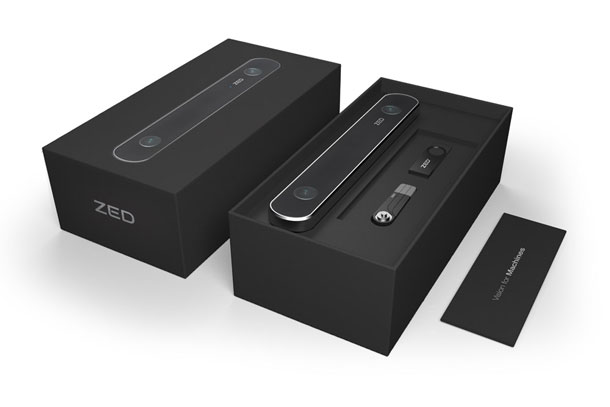ZED - USB 3
Congratulations on being the owner of a brand-new ZED USB 3 camera!
You can use it for a wide range of applications, from robotics and drones to virtual reality and augmented reality. The ZED camera provides high-definition stereo video and depth perception, enabling you to create immersive experiences and advanced computer vision applications.
This guide will help you get started with your ZED camera, from unpacking it to running your first application.
📌 Note: If you are the owner of a ZED X stereo camera, please refer to the ZED X Getting Started Guide for specific instructions related to that model.
📌 Note: If you are the owner of a ZED X One monocular camera, please refer to the ZED X One Getting Started Guide for specific instructions related to that model.
What’s in the Box? #
Let’s review the items you have received:
| ZED 2i | ZED Mini |
|---|---|
| A brand new ZED 2i Stereo camera | A brand new ZED Mini camera |
| A 1.5m and a 4m external USB 3.0 cable |

Connect your camera #
Unpack your camera, plug the camera in a USB 3.0 port and go to the next step. ZED cameras are all UVC compliant so they should be automatically recognized by your computer.
Some frequently asked questions:
- How to use multiple cameras on a single platform.
- How to extend the USB working distance of your camera.
- How to fix USB 3.0 connection issues or drop frames.
- To turn your ZED into an IP camera and transmit video over IP, see Local Streaming section.
Download and install the ZED SDK #
The ZED SDK is available for Windows, Linux and NVIDIA® Jetson™ platforms. It contains all the libraries that power your camera along with tools that let you test its features and settings.
Select your platform and follow the installation guide: Windows, Linux, Jetson.
Test the camera with the ZED Tools #
Test the capabilities of your brand new ZED camera with the ZED Tools, a set of applications that provide a user-friendly interface to visualize and interact with the data captured by your new device.
Play with the code samples #
The ZED SDK includes several tutorials and samples to learn how to use video, depth, positional tracking, mapping and other information, along with many third-party integrations.
You can also check our GitHub page for the latest updates. Read the API documentation to learn more, and start experimenting with the samples!
Using Docker #
For deployment in production environments, we recommend packaging and running your applications and the ZED SDK in Docker containers.
